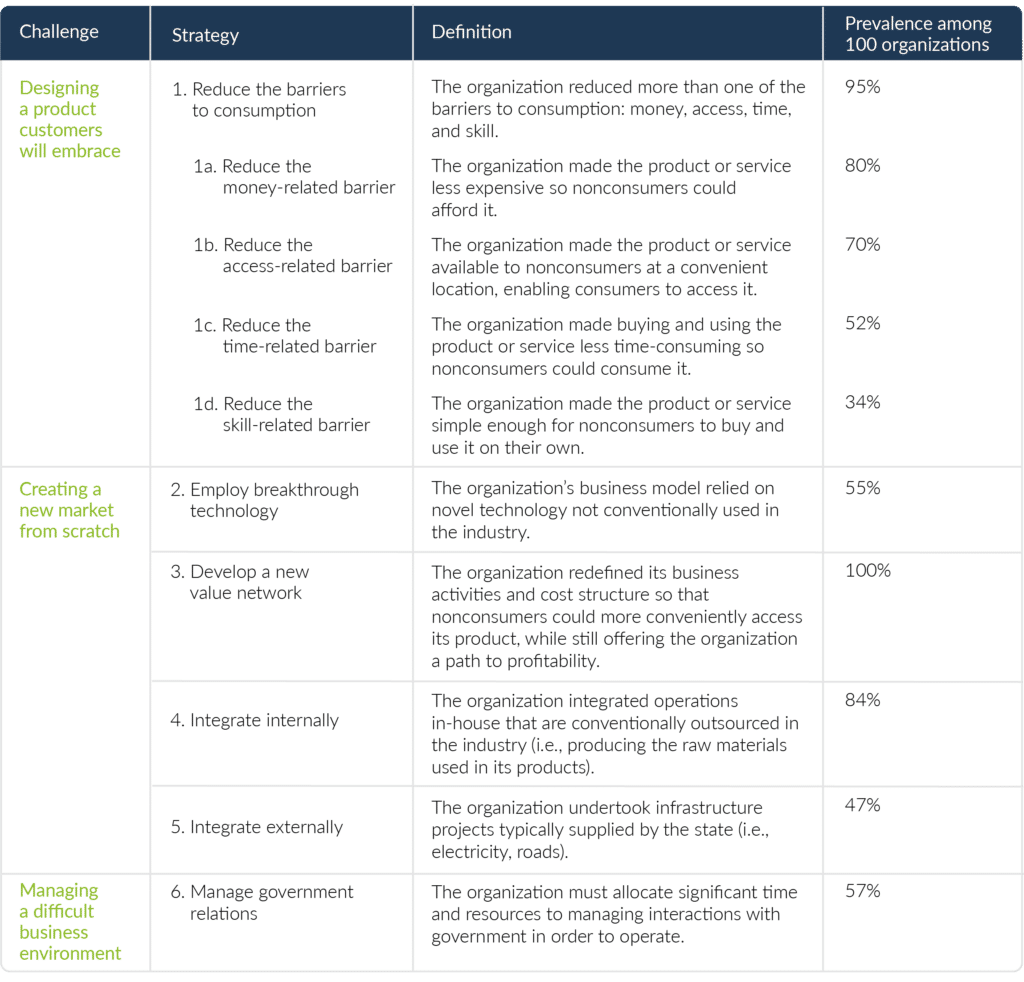EXECUTIVE SUMMARY
It’s a widely acknowledged truth that innovation plays a pivotal role in shaping the economic fabric of nations. In particular, market-creating innovations—which create new markets by democratizing access to previously exclusive products—have been a vital force for generating prosperity in wealthy countries, and are integral for building a prosperous future for today’s emerging economies.
In order to create new markets for people who have traditionally been unable to purchase commercial products due to barriers like cost and access, organizations not only need to develop a product that meets their customers’ needs, but must also develop a way to get it to them. This involves creating jobs and building infrastructure that wouldn’t be necessary if the organization were targeting existing markets. Lasting prosperity follows—for the organizations creating new markets and the regions and societies where they operate.
But here’s the problem. As important as market creation is for economies, and indeed organizations, the phenomenon still remains, in large part, a mystery. Successful attempts are often attributed to the luck and timing of the entrepreneur. Consequently, starting new ventures, particularly in emerging markets where many market-creating opportunities lie, appears inordinately risky, causing would-be entrepreneurs and investors to shy away from creating new and impactful businesses.
To demystify the process of building market-creating innovations, we studied 100 market-creating organizations that we have identified as “successful”—meaning their efforts have focused on creating sustainable new markets that serve ignored populations of consumers. Spanning history, industry, and the globe, organizations profiled include global powerhouses such as Ford with its Model T car and Sony with its Walkman; as well as modern-day pioneers that show immense promise.
Despite the diversity of organizations studied, the results revealed that successful market-creating organizations have much more in common than simply luck, good timing, or the hard work of the innovators behind them. In fact, they tend to employ common strategies in the ways they overcome broad challenges:
- Reducing the barriers to consumption: 95% of the organizations we studied reduced more than one of the following barriers: money, time, access, and skill.
- Employing breakthrough technology: 55% used business models that employed novel technology not conventionally used in the industry.
- Developing a new value network: 100% of organizations redefined their business activities and cost structure in order to reach new consumers while still ensuring a path to profitability.
- Integrating internally: 84% took on operations in-house that are conventionally outsourced to industry partners.
- Integrating externally: 47% of organizations undertook projects typically handled by the state.
- Managing government relations: 57% devoted significant time and energy to managing relations with the state.
The encouraging findings of this research reveal that market-creating organizations have far more control over their destiny than many previously imagined. By using the strategies outlined in this research as guideposts, innovators can, to a large degree, make their own luck. In doing so, they stand to not only generate significant wealth for themselves, but also trigger shared prosperity in nations where many live in poverty.





